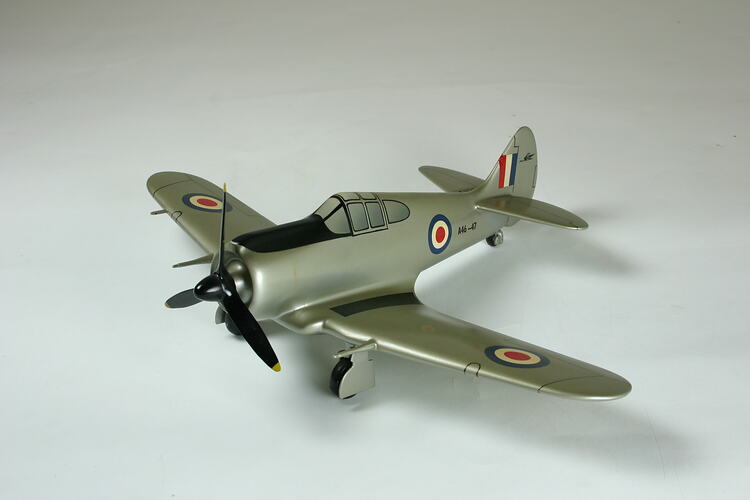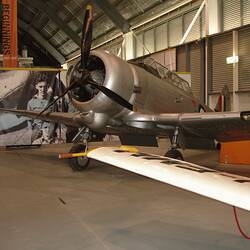The Boomerang is a remarkable example of Australian adaption and innovation in response to a crisis. In December 1941, the outbreak of war with Japan exposed an almost total lack of modern fighter aircraft for the Royal Australian Air Force (RAAF). On 10 December 1941, the Commonwealth Aircraft Corporation (CAC) at Fishermans Bend revived earlier proposals to build a 'Wirraway Interceptor' using components of the CAC Wirraway two-seat trainer in production since 1939 and the Pratt & Whitney R-1830 Twin Wasp engine being licence-built by CAC at Lidcombe, NSW for the Australian-built Beaufort bomber. CAC engineer Fred David produced the design concept drawings. David was an Austrian Jew who had fled Nazi persecution after working for Heinkel AG in Germany and had spent a period in Japan working for Aichi Tokei Denko KK on the D3A dive bomber. The first 'Boomerang' was flown at CAC's Fishermans Bend airfield on 29 May 1942. From the drawing board to first flight took just five months.
After a period of operational evaluation by the RAAF at Laverton and at 2 OTU (Operational Training Unit) at Mildura in 1942, the Boomerang entered RAAF service in 1943. It was used in defence of Northern Australia and in New Guinea and Bougainville as an army co-operation aircraft where it proved to be well suited to the hazardous task of marking targets in mountainous terrain. Despite several attempts, no Japanese aircraft were shot down by a RAAF pilot flying a Boomerang. The importation of Curtiss P-40 Kittyhawk and Supermarine Spitfire fighters for the RAAF quickly made the Boomerang obsolete for interceptor fighter duties. It remained in production until 1944, largely to keep the CAC factory occupied until production of Mustang fighters began. A one-off CA-14/CA-14A prototype with a General Electric turbo supercharged engine was built along with 249 production Boomerang aircraft in batches designated CA-12, CA-13 and CA-19. The Boomerang was quickly withdrawn from RAAF service in 1945 and many surviving aircraft were scrapped at Oakey in Queensland. At least two Boomerangs have recently been restored to flying condition.
More Information
-
Keywords
-
Localities
-
Authors
-
Article types

